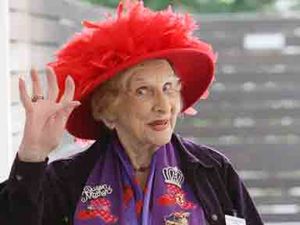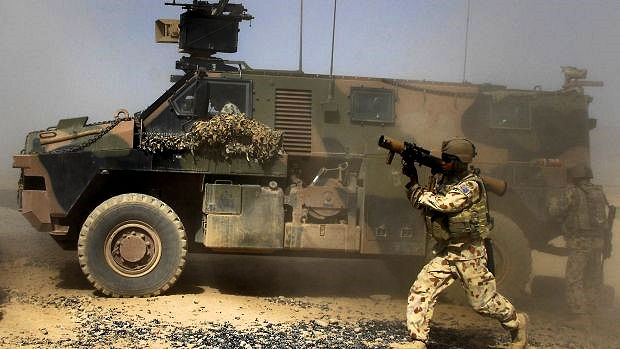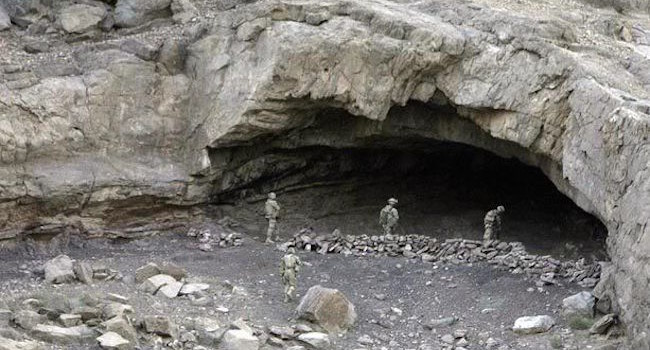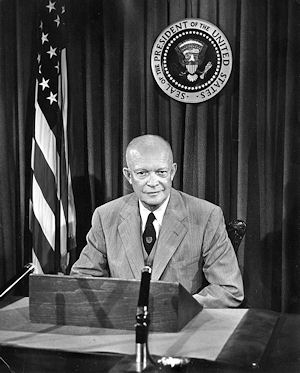|
|
||
|
||
|
Privacy Policy | Editorial Policy | Profit Policy | Join the Association | List of Members | Contact us | Index | Links |
||
|
Back Go to page: 1 2 3 4 5 6 7 8 9 10 11 12 13 14 15 16 17 18 19 20 Forward
|
||
|
The People I meet.
|
||
|
Late in July I was holidaying in Caloundra on the Sunshine Coast, when unbeknown to me, the Red-Hat Ladies had also decided that now would be a good time to hold one of their annual gigantic get togethers and as fate would have it, to hold it also in Caloundra. Estimates put the number of ladies under the dashing red millinery to be in excess of 450 and you can bet Caloundra’s traders were very pleased to see them. They could be seen everywhere, in the coffee shops, in the fashion shops, in the nick-knack shops, in busses going here there and everywhere, in the pubs and clubs, all with red hot and bulging purses at the ready and generally having a big old spend up and one heck of a good time.
While I was completely oblivious to all this, it seems the word has spread through the group that there was a Radtech holidaying on the Sunshine Coast and they had their spies out to see if they could first find then entice this Radtech into their group to brighten up their day and to try and capture some of that alluring and much sought after Radtechitis.
I just happened to be walking past Caloundra’s Civic Centre when I heard this ecstatic shriek pouring forth from what seemed a thousand female voices, all of them shouting, “There he is, there he is”.
You can click some of these pics for a clearer view.
|
||
|
L-R: Jan Holmes, Sandi Owen, dashing Radtech, Maggie Anderson, Barb Ross, Sue Andrew, Leslie Andrews, Judy MacKenzie and down front, Judith McDonald.
|
||
|
The next minute, a group of these lovely ladies dashed across the road, unconcerned that the road was heavily congested and their lives were in imminent danger, their whole beings concerned only with ensnarling and capturing mine-self in an attempt to rub off and obtain some of that captivating Radtechitis.
Heavily outnumbered, and unable to resist, a terrified self was ushered across the road and into the Civic Centre and ordered to place one’s person on a strategically placed lounge chair while the ladies in turn draped themselves upon ones-self endeavouring to rub off some of that magic elusiveness. At first I fought and struggled as hard as was possible but to no avail, I was a prisoner to these determined ladies and in the end I capitulated and abandoned all defence and allowed a small amount of that Radtechitis to change hands.
|
||
|
|
||
|
Such is the burden the average Radtech must endure.
The “Red Hat Society” is an international social organization founded in 1998 in the United States by Sue Ellen Cooper. It was originally open for women aged 50 and beyond, but now is available to women of all ages and today, there are over 20,000 chapters throughout the world.
In Australia membership is open to all young-at-heart middle aged woman who are looking to reunite with their youth by playing dress-ups and having tea parties. The rules are as follows:
· Strictly no responsibility or obligations · No strict rules and by-laws · Time for a break is in the Red Hat dictionary, Busy is not! · You must be a woman of 50 or over, and · You must attend functions in a Red Hat and Purple Outfit.
|
||
|
|
||
|
In 1997, inspired by a well-known Jenny Joseph poem which begins “When I am an old woman, I shall wear purple, with a red hat which doesn't go and doesn't suit me,” Sue Cooper bought an old red fedora from a thrift shop and when one of her good friends was nearing her 55th birthday, she knew she had to give her friend something out of the ordinary. She bought another red hat and gave it to her friend suggesting that she keep it as a reminder of how to grow old in a playful manner.
Cooper repeated the gift to other ladies on request several times, and those women responded by wearing their own red hats and several bought purple outfits and held a tea party on the 25th April 1998. Thus began a new women’s movement that embraced a renewed outlook on life filled with fun and friendship, fulfilling lifelong dreams.
The Red Hat Society was born
After spreading by word of mouth, the Society first received national publicity in the US in the year 2000 through the magazine Romantic Homes. Cooper then established a "Hatquarters" to field the hundreds of e-mail requests for help starting chapters. She now serves as "Exalted Queen Mother", and has written two best-selling books about the Society, "The Red Hat Society: Friendship and Fun After Fifty" published in April 2004 and "The Red Hat Society's Laugh Lines: Stories of Inspiration and Hattitude" published in April 2005.
|
||
|
|
||
|
The Red Hat
movement has been in Australia for over 16 years. The first group was
started by Florence Slattery (The Queen) who lives in Warwick in Qld and
w
Florence and her friends dressed up and went off to lunch always drawing attention to themselves with people always wanting to know “what it was all about”. The word spread and the movement eventually flourished all over Australia and today Florence, who is in her 101st year, is still living the dream of love, laughter and friendship and although not able to travel to large events outside of Warwick, is still active in her home town.
Anyone can fo can go out dressed in purple clothes with a red hat and refer to themselves as red hatters, but cannot refer to themselves as being a Supporting Member of the RHS if they are not. Ladies wishing to join should go to their web site (http://www.matildarose2.com/) find a group close to them and make contact.
|
||
|
If I had a dollar for every girl that found me unattractive, they'd eventually find me attractive.
|
||
|
Fourth generation warfare: is Australia ready for it? Australia's current war on terror was declared after the September 11 attacks in 2001. It's still going on. Do you ever wonder what the military nature of that long war is? If so, do you also wonder why so little of our current ADF is used in that war? Could it be that our current war is what future wars will be like? If so, how relevant is our current force structure to fighting those future wars? Indeed how secure are we really, despite the heavy investment in capital equipment?
The Australian Defence Force structure is complex and extensive, nevertheless some "big ticket" items stand out. In a war lasting 15 years to date, one might expect them to have seen some action, yet, this does not seem to be the case. For example, the army has nearly 60 Abrams tanks yet the last time we used tanks in action was in the Vietnam War. The navy has six Collins class submarines that have never sunk anything. We are committed to 12 new submarines whose deterrent role is questionable. The air force has a fleet of F18s, soon to be replaced by the Joint Strike Fighter. The last time an RAAF aircraft shot down an opponent was in the Korean War.
Is it possible that Australia is equipped to fight a war that will never eventuate? Even worse, do we have expensive, complex capital equipment, intended for that illusory war, lying idle, while we fight a long, real, current and different war effectively on a shoestring? Increasingly, the answer seems to be that, yes, it is possible. The nature of war is changing – yet again and we could be failing to keep up. This change is captured, controversially, by the doctrine of fourth generation war. The military mind likes to put things in boxes. They are challenged by this because change does not move discretely from one box to another. It evolves. If we are in the era of the fourth generation of warfare, what were the other three?
|
||
|
|
||
|
|
||
|
Fourth generation warfare is characterised by asymmetry, in which the weak can and does triumph over the strong. As one noted exponent observes "it is very easy to win all the tactical engagements in a fourth generation conflict yet still lose the war". Afghanistan is a major conflict zone in our war on terror, and yet, neither the British, nor the Soviets, nor ourselves seem able to "win". Indeed, we have already withdrawn.
A smart but weak combatant, embracing the doctrine of fourth generation war, can bog down a much stronger opponent until that opponent tires and gives up. This combatant recognises that contemporary, fourth generation warfare is fought at three levels: physical, mental and moral. This combatant emphasises the moral level, rather than the physical and mental, in which he can never compete. The emphasis is achieved, internally, by inciting anger and hate against the opponent, as that strong opponent inflicts harm, and desolation on the combatant's own innocent civilians. Externally, the emphasis is achieved by performing and encouraging isolated outrages in the opponent's homeland, thereby creating fear and uncertainty, and also by portraying the opponent's active operations in the worst possible light in that homeland.
By these means, a determined combatant can neutralise an opponent's huge physical and mental advantages and inflict defeat – not battlefield defeat, but moral defeat. This type of warfare is here to stay. Lest anyone is tempted to dismiss the new doctrine, flawed though it currently may be, let them understand that copies of military analyses, illuminating fourth generation warfare, were found in the caves at Tora Bora, the al-Qaeda hideout in Afghanistan.
|
||
|
|
||
|
|
||
|
When the American President claims that there are no identifiable links between the latest terrorist outrage and organisations such as Hamas, Hezbollah, al-Qaeda, IS, etc, he should choose his words very carefully, because people other than ourselves are listening.
If we recognise fourth generation warfare and adapt accordingly, what changes might we see in Western armed forces in general, and in the ADF in particular?
The first reform that needs to take place is to recognise that the enemy is operating here, locally and domestically as well as in the operational zone, which is usually overseas. Co-ordination, if not unification, between the police and the military is therefore essential.
The police have much to teach the ADF. Their approach is to de-escalate a conflict, whereas the military approach is to escalate it. Escalation requires ever heavier firepower, and we certainly have a lot of that. De-escalation means lots of things including features not yet identified, since no one is analysing fourth generation warfare. However, it certainly includes reducing the "strangeness" of friendly forces by eschewing the sort of "apartheid" that we have so often employed, particularly when operating with the Americans. US Forces routinely create a doppelganger society in countries they invade, importing their own lifestyle and not mixing at all with the indigenous population. Also, "Shock and Awe" – the Rumsfeldian doctrine – has to be consigned to the garbage bin. There is nothing that smacks of de-escalation in that extreme approach.
Then there is the fact that, although we still structure ourselves around entities we call states, the enemy does not. In former times, it was simple and clear to declare war, as we did in 1939 against Germany. However, where the opponent does not necessarily hold territory, and is not a state, we can be disorientated by this.
Finally,
there need to be troops on the ground, as many as possible, who are
highly mobile, who are equipped and trained to resolve provocations and
outrages, both by
How likely is it that force structure would be allowed to change so fundamentally? The answer is: not very likely. In his farewell speech, President Eisenhower warned specifically "against the acquisition of unwarranted influence, whether sought or unsought, by the military-industrial complex".
A notable example of his warning is surely the new submarines’ project in which the industrial tail, assisted by a command mindset of monster World War II battles in the Pacific, is wagging the military dog. We are pre-occupied with a possible future war with China and although we cannot ignore that threat, we should recognise that China, too, is vulnerable to a fourth generation warfare opponent.
In moral warfare, what was true in the Bronze Age is still true. We sympathise with David, not Goliath. Despite their current brutality, that is the terrorists' ultimate strategy. Political and cultural change as well as military change is essential. The recent white paper shows that we have hardly started.
|
||
|
I find it ironic that the colours red, white, and blue stand for freedom, until they're flashing behind you.
|
||
|
|
||
|
|
||
|
Back Go to page: 1 2 3 4 5 6 7 8 9 10 11 12 13 14 15 16 17 18 19 20 Forward |
||
|
|

 ho
when aged 83, was visited by a friend from the USA who suggested that
Florence should introduce the movement to Australia. Florence talked to
her friends in Warwick and soon formed the first chapter in Australia,
called the “Rose City Red Had Society”. This was in November 2000.
ho
when aged 83, was visited by a friend from the USA who suggested that
Florence should introduce the movement to Australia. Florence talked to
her friends in Warwick and soon formed the first chapter in Australia,
called the “Rose City Red Had Society”. This was in November 2000.

 anticipatory intelligence to prevent them in the first place, and also
by minimum necessary force, when they occur.
anticipatory intelligence to prevent them in the first place, and also
by minimum necessary force, when they occur.